- July 15, 2025
- By Rebecca Washington
- Uncategorized
How Much Does Roofline Work Cost in Melbourne, Australia?
How Much Does Roofline Work Cost in Melbourne, Australia?
Roofline work is one of those critical investments most homeowners in Melbourne don’t think about—until it’s absolutely necessary. From fascias and soffits to guttering and bargeboards, these components protect your home from the elements, improve curb appeal, and prevent costly structural damage. But if you’re wondering, “How much does roofline work cost in Melbourne?”, you’re not alone. The answer depends on a few key factors that we’ll break down with Gutter Cleaning Melbourne.
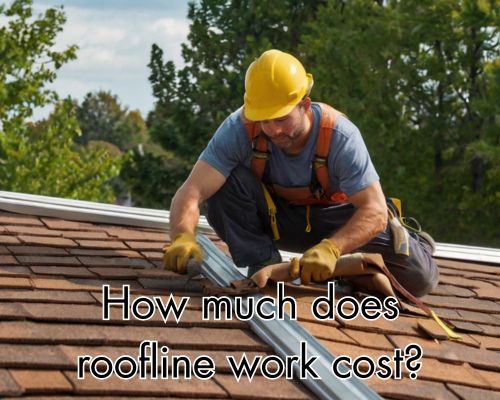
Whether you’re in Brighton, St Kilda, or the leafy suburbs of Doncaster or Glen Waverley, understanding the cost of roofline repairs or replacement will help you plan better and avoid hidden surprises.
What Exactly Is Roofline Work?
Let’s start with a quick primer. Your roofline refers to the collection of features that run along the edges of your roof:
- Fascias: These are the vertical boards that run along the edge of the roof, supporting the bottom row of tiles and holding up the guttering.
- Soffits: These are tucked underneath the fascia and help ventilate the roof while protecting rafters from moisture and pests.
- Bargeboards: Located at the gable ends of roofs, they serve both structural and decorative functions.
- Guttering and Downpipes: These are essential for directing rainwater away from your home’s foundations.
Roofline work can involve repairing, replacing, or upgrading any combination of these components.
Average Roofline Work Cost in Melbourne
In Melbourne, the cost of roofline work can vary significantly depending on the scope of the project, the materials used, and the accessibility of the roof. Here’s a rough breakdown:
| Roofline Component | Average Cost (AUD) |
|---|---|
| Soffit & Fascia Replacement | $80 – $120 per metre |
| Guttering Replacement | $50 – $100 per metre |
| Bargeboard Repairs | $500 – $1,500 per job |
| Full Roofline Overhaul | $3,500 – $8,000+ |
Keep in mind that these are averages. For heritage properties in suburbs like Fitzroy or Carlton, where ornate rooflines are common, prices can be significantly higher due to the complexity of the work.
Factors That Affect Roofline Work Costs
1. Material Choice
The type of materials used has a major impact on cost and longevity:
- PVC (uPVC): Popular for its affordability and low maintenance. Prices typically range from $80–$100 per metre.
- Timber: Aesthetically traditional but more expensive and high-maintenance. Ideal for period homes.
- Metal (Colorbond or Zincalume): Durable and modern. Colorbond fascias and guttering are widely used in Melbourne for their rust resistance and sleek look.
👉 Pro Tip: Colorbond is especially popular in areas like Point Cook and Craigieburn where modern housing developments dominate.
2. Access and Roof Height
A single-storey house in Hoppers Crossing will be much easier (and cheaper) to work on than a three-storey terrace in South Yarra. Roof access issues often mean additional scaffolding or cherry picker hire, which can add $500–$2,000 to your final bill.
3. Extent of Damage or Wear
Partial replacements will naturally cost less. But if there’s extensive rot, pest damage, or water ingress—especially common in older suburbs like Brunswick—you may need a full overhaul.
4. Labour Rates
Labour costs in Melbourne generally range between $50 to $80 per hour, but specialized trades like roof plumbers or carpenters may charge more for complex roofline tasks. Expect slightly higher hourly rates in central Melbourne or affluent areas like Toorak or Brighton.
Roofline Work vs. Roof Plumbing: What’s the Difference?
While there’s some overlap, roofline work isn’t the same as roof plumbing. Roof plumbers focus on waterproofing and drainage systems—like flashing, box gutters, and downpipes. Roofline specialists, on the other hand, deal more with the structural and aesthetic perimeters of the roof.
In Melbourne, many roofing companies provide both services as a package, so it’s worth getting quotes that include potential roof plumbing needs, especially if you’re dealing with water stains or drainage issues.
DIY vs. Professional Installation
You can attempt basic gutter cleaning or painting fascias yourself—but anything structural or at height should absolutely be left to licensed professionals like Gutter Cleaning Melbourne. Not only for safety reasons, but also to ensure compliance with Victorian Building Authority (VBA) regulations.
Failure to install guttering or soffits correctly can lead to water ingress, insulation issues, and even termite problems—especially in high-humidity zones like the Dandenong Ranges.
Is Roofline Work Covered by Insurance?
It depends. If the damage is sudden and caused by a storm (a common scenario during Melbourne’s temperamental spring), your home insurance may cover repairs. However, gradual deterioration due to neglect or poor maintenance likely won’t be covered.
👉 Always check with your insurer and document any storm damage immediately with photos and a qualified roof inspection.
How to Save Money on Roofline Work
- Get Multiple Quotes: Aim for at least three written quotes from licensed roofers in Melbourne.
- Schedule Off-Peak: Avoid peak seasons like summer or post-storm demand surges.
- Combine Jobs: Bundling roofline work with roof painting, insulation, or roof restoration may reduce overall labour costs.
- Consider Upgrades: Installing leaf guards or Colorbond replacements may cost more upfront but reduce maintenance over the long term.
Recommended Roofline Contractors in Melbourne
While we won’t name names here, platforms like Hipages, ServiceSeeking, and Oneflare are excellent for comparing verified local professionals. Look for roofline specialists with strong reviews in your suburb—especially those experienced with Melbourne’s diverse architectural styles, from Victorian terrace houses to contemporary townhouses.
Final Thoughts: Is Roofline Work Worth It?
Absolutely. Roofline work is not just a cosmetic upgrade—it protects your investment. In Melbourne’s unpredictable climate, where intense sun can warp timber and downpours can overwhelm weak guttering, maintaining a solid roofline is essential.
When budgeting for roofline work in Melbourne, factor in both immediate costs and long-term savings. Modern materials like Colorbond or PVC may have a higher upfront cost, but they pay off in durability and reduced maintenance. And don’t forget the added property value—clean, well-maintained fascias and gutters can add serious street appeal.
FAQs
Q: How long does roofline work take?
A: Small jobs like fascia replacement may take 1–2 days, while full overhauls can last up to a week, depending on weather and complexity.
Q: Can roofline work be done in winter?
A: Yes, though Melbourne’s winter rains may cause delays. Many roofers still operate year-round with weather-proofing strategies in place.
Q: Are there building permits required?
A: Not usually for like-for-like replacements. However, structural alterations or significant renovations may require council approval in some Melbourne municipalities.
…
- July 11, 2025
- By Rebecca Washington
- Uncategorized
What Type of Roof Will Last the Longest? A New Jersey Homeowner’s Guide
What Type of Roof Will Last the Longest? A New Jersey Homeowner’s Guide
In the Garden State, where harsh winters, humid summers, and nor’easters can test the limits of your home’s durability, investing in a long-lasting roofing system isn’t just smart—it’s essential. If you’ve been asking, “What type of roof will last the longest?” and you’re a New Jersey homeowner, this guide has your answer. With CJ Commercial Roofing NJ, we’ll explore the most durable roofing materials, compare lifespans, consider New Jersey’s unique climate factors, and help you make a decision that balances longevity, cost, and local suitability.
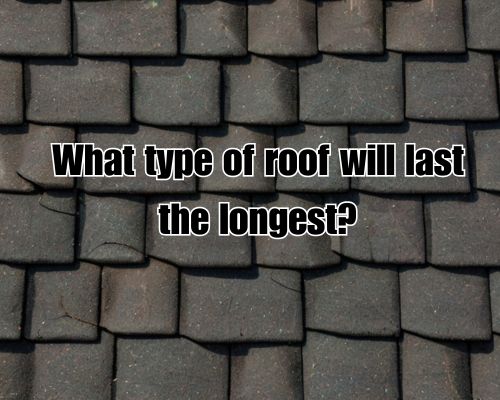
🏠 Why Roofing Longevity Matters in New Jersey
Roofs in New Jersey endure year-round exposure to extreme weather. From coastal salt spray in Cape May to heavy snowfall in Sussex County, local roofing materials must resist everything from moisture intrusion and mold growth to thermal expansion and high winds.
A long-lasting roof not only increases the value of your home in places like Princeton or Montclair, but also reduces the need for frequent maintenance or premature replacement—two things that can add up fast.
⛅ Climate Challenges That Affect Roof Longevity in NJ
Before diving into materials, it’s important to understand what local weather throws at your roof in New Jersey:
- Freeze-Thaw Cycles: Water expands when frozen, and repeated cycles can crack weaker roofing systems.
- High Humidity: Especially in areas near the Jersey Shore, this promotes mold and algae.
- Nor’easters & Windstorms: These can lift shingles and damage weaker structures.
- UV Exposure: Intense summer sun can degrade certain roofing materials.
So, what roofing material can stand up to all of these conditions the longest?
🥇 Most Durable Roofing Materials (Ranked by Lifespan)
Here’s a breakdown of the roofing materials known for their longevity, from longest-lasting to more budget-conscious choices.
1. Slate Roofing – 75 to 100+ Years
Slate is the undisputed king of roof longevity.
- Lifespan: Up to a century or more.
- Durability: Naturally fire-resistant, non-porous, and highly wind-resistant.
- Best For: Historic homes in towns like Morristown or Princeton; upscale properties that want timeless curb appeal.
- Local Insight: Slate roofs are common in older Northeast colonial-style homes and thrive in New Jersey’s temperate climate.
Drawback: Slate is expensive ($15–$30 per square foot) and requires reinforced roof framing due to its weight.
2. Clay or Concrete Tile – 50 to 100 Years
Though more popular in the Southwest, tile roofing has its place in New Jersey—especially coastal areas where salt corrosion can affect metal.
- Lifespan: Up to a century with proper maintenance.
- Durability: Resistant to fire, rot, and insect damage.
- Local Consideration: Often used in custom-built homes in Bergen County and around coastal cities like Atlantic City.
Drawback: Weight is again a concern; not ideal for all home structures.
3. Standing Seam Metal Roofing – 40 to 70 Years
This is a rising star in roofing longevity, especially for modern homes and eco-conscious homeowners.
- Lifespan: 40 to 70 years.
- Durability: High resistance to wind, corrosion, and temperature swings.
- Energy Efficiency: Reflects solar heat—perfect for reducing summer cooling costs in NJ.
- Local Bonus: Ideal for energy-efficient homes in Edison, Cherry Hill, or other areas prioritizing sustainability.
Note: Look for Kynar-coated panels to resist salt air and maintain color longevity.
4. Architectural Asphalt Shingles – 25 to 50 Years
The most common roofing material in New Jersey.
- Lifespan: 30 to 50 years for architectural-grade (vs. 15–25 years for 3-tab).
- Cost-effective: More affordable upfront, typically $5–$8 per square foot.
- Local Fit: Good balance of cost and performance in suburban towns like Toms River and Bridgewater.
Caveat: Not as durable under extreme wind conditions unless properly installed and sealed.
5. Synthetic (Composite) Roofing – 30 to 50 Years
Made to resemble slate or wood shake but with lower weight and higher impact resistance.
- Lifespan: Typically 40–50 years.
- Advantages: Lightweight, resistant to impact, and mold/mildew-resistant.
- Local Use: Often installed in upscale developments in areas like Short Hills or Colts Neck where aesthetics matter but slate is too heavy or costly.
🔍 Key Longevity Factors Beyond Materials
Even the best materials can underperform if other elements are overlooked:
✅ Proper Installation
Bad installation can void warranties and cut roof life in half. Always choose certified local contractors in New Jersey such as CJ Commercial Roofing NJ with experience in your chosen material.
✅ Ventilation & Insulation
Inadequate attic ventilation leads to trapped heat and moisture—prime culprits in roof deterioration.
✅ Gutter Maintenance
In places with heavy fall foliage like Summit or Morristown, clogged gutters can lead to water pooling and rot.
✅ Roof Pitch
Steeper roofs shed water and snow more effectively, reducing the likelihood of leaks or ice damming.
💬 Local Roofing Trends & Insights
In New Jersey, roofing preferences often align with architectural style and weather conditions:
- Shore Towns (Asbury Park, Ocean City): Metal roofing resists salt air and corrosion.
- Wooded Suburbs (Westfield, Chatham): Composite and asphalt shingles dominate for affordability and style.
- Historic Districts (Lambertville, Cape May): Slate and tile uphold traditional aesthetics and local regulations.
💰 Cost vs. Longevity: What’s the Best ROI?
If you’re planning to stay in your home for decades, a slate or metal roof is a solid investment. However, for rental properties or homes you plan to sell within 10–15 years, architectural shingles offer a better ROI.
Pro Tip for NJ Homeowners: Check with local municipalities for roofing permits and inquire about state energy efficiency incentives, particularly if choosing metal or solar-integrated systems.
🛠️ Final Answer: What Type of Roof Will Last the Longest?
Slate roofing will last the longest—often outliving the house itself. But standing seam metal roofing comes close and offers superior resilience to NJ’s climate while being lighter and more eco-friendly.
📌 Conclusion: Choosing Long-Term Roofing Value in New Jersey
When it comes to choosing a roofing system that will last the longest in New Jersey, there is no one-size-fits-all solution. Homeowners must weigh upfront cost, climate resilience, structural limitations, and long-term value. Whether you live near the Pine Barrens, the Jersey Shore, or deep in suburban Morris County, a roof that endures means peace of mind and reduced maintenance headaches.
Bottom line: If your goal is the longest-lasting roof, slate is the champ. But if you want durability without the weight or cost, metal roofing is a close contender for New Jersey homes.
…
- July 11, 2025
- By Rebecca Washington
- Uncategorized
How to Estimate Commercial Roofing Jobs in New Jersey: A Contractor’s Guide to Accurate Bids & Profitability
How to Estimate Commercial Roofing Jobs in New Jersey: A Contractor’s Guide to Accurate Bids & Profitability
Estimating commercial roofing jobs can be a complex process, especially in a highly regulated and diverse market like New Jersey, USA. Whether you’re a seasoned roofing contractor or new to the trade, developing accurate estimates is critical—not just for winning jobs, but for ensuring profitability and long-term client satisfaction.
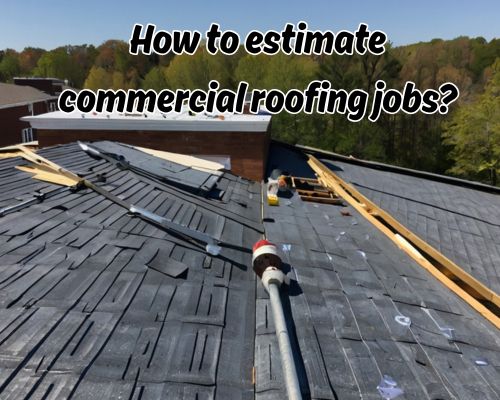
In this guide, we’ll walk through how to estimate commercial roofing jobs with precision, touching on key variables like material selection, labor costs, building codes, overhead, and local market influences.
✅ Why Accurate Estimation Matters in Commercial Roofing
In commercial roofing, underestimating can lead to budget overruns and negative client relationships, while overestimating can cause you to lose bids to competitors. Precision in estimating ensures:
- Realistic project timelines
- Appropriate material ordering
- Profitable margins
- Regulatory compliance
- Enhanced reputation and referrals
🏢 Step-by-Step: How to Estimate Commercial Roofing Jobs in New Jersey
1. Conduct a Comprehensive Site Inspection
Before you crunch numbers, inspect the job site thoroughly:
- Roof size: Measure the roof’s square footage (width × length), adjusting for slope.
- Roof type: Is it flat (low-slope), steep-slope, or a specialty roof (e.g., green or solar)?
- Current roof condition: Are there signs of rot, water damage, or membrane degradation?
- Access and logistics: Consider accessibility, debris removal, crane needs, etc.
🔎 In New Jersey cities like Newark, Trenton, and Jersey City, older industrial buildings often have outdated roof structures that may need reinforcement, impacting cost.
2. Select the Right Roofing System
Different materials come with different costs and lifespans. Some common commercial roofing systems in NJ include:
- TPO (Thermoplastic Polyolefin) – Popular for energy efficiency and cost-effectiveness
- EPDM (Ethylene Propylene Diene Monomer) – Great for flat roofs, especially in colder climates
- Built-up roofing (BUR) – Offers durability with multiple layers of bitumen and gravel
- Metal roofing – Long-lasting and fire-resistant, suitable for large structures
✅ In coastal areas like Atlantic City or Ocean County, roofing materials must also be resistant to high winds and salt corrosion.
3. Factor in Labor Costs
Labor accounts for a significant portion of your estimate. Consider:
- Crew size and experience
- Union vs. non-union labor (especially relevant in Northern NJ)
- Estimated installation time based on material and job complexity
- Prevailing wage laws if you’re bidding on public works projects (check the NJ Department of Labor & Workforce Development for updates)
💡 The average labor rate for commercial roofers in New Jersey hovers between $60 to $90 per hour depending on the region and scope.
4. Include Overhead and Indirect Costs
Don’t overlook general business expenses:
- Insurance (general liability and workers’ comp)
- Equipment rental (e.g., boom lifts, dumpsters)
- Permits and inspection fees
- Administrative costs
In New Jersey, towns like Edison, Paterson, and Hoboken may have different permitting costs. Always contact the local building department to get precise numbers.
5. Account for Material Costs and Waste Factor
Material pricing varies significantly depending on market rates, suppliers, and seasonality. Include:
- Cost per square (1 square = 100 sq ft)
- Adhesives, fasteners, insulation
- Underlayment, flashing, sealants
- Waste factor: 10% to 15% is standard
📌 Tip: Work with local suppliers in Bergen, Monmouth, or Camden County to secure bulk pricing and reduce transportation costs.
6. Evaluate Roof Complexity and Design Features
Special design considerations can increase costs, including:
- HVAC units and penetrations
- Skylights
- Parapet walls
- Drainage systems
- Historical building requirements (especially in Princeton or Morristown)
🧠 Use a roof takeoff software like PlanSwift, RoofSnap, or STACK Estimating to model complex commercial roofs more accurately.
7. Incorporate Contingency Buffer
In New Jersey’s unpredictable climate—harsh winters, coastal storms, and humid summers—unexpected delays or damages are likely. Always include:
- 5-10% contingency
- Delays due to weather
- Permit delays or inspection changes
- Price volatility in roofing materials
⛈️ Weather delays are common in central NJ during late fall and early spring—factor this into your timeline.
8. Local Compliance and Safety Regulations
New Jersey adheres to strict International Building Code (IBC) guidelines and local township rules.
Ensure:
- OSHA compliance
- Fall protection for flat and sloped roofs
- Fire code compliance for torch-down materials
- EPA standards for waste disposal and hazardous materials
🔍 Cities like Elizabeth and Camden often have additional zoning overlays that may affect roof height, reflectivity, or drainage systems.
9. Calculate Your Profit Margin
Once all costs are compiled, apply a markup:
- Standard markup: 10-30%
- Consider competition in your area
- Larger, public, or union jobs may allow for slimmer margins due to higher volume
💰 Commercial roofing contractor in New Jersey typically aim for gross profit margins of 25% to 40%, depending on their business model and specialization.
📊 Example of a Commercial Roofing Estimate (Flat Roof – 10,000 sq ft)
| Cost Item | Description | Total |
|---|---|---|
| Materials | TPO, adhesives, insulation, sealants | $35,000 |
| Labor | 5-person crew for 10 days | $28,000 |
| Equipment | Lifts, scaffolding, tools | $3,500 |
| Permits & Admin | Trenton permitting fees + insurance | $2,200 |
| Overhead & Misc. | Office admin, logistics | $3,000 |
| Contingency (7%) | Weather, price fluctuation | $5,100 |
| Total Before Profit | $76,800 | |
| Profit Margin (30%) | $23,040 | |
| Final Estimate | $99,840 |
📍 Local Insight: Roofing Market Trends in New Jersey
- The commercial roofing market in New Jersey is growing, driven by redevelopment in places like Jersey City, Newark, and Asbury Park.
- Energy-efficient roofing (e.g., cool roofs, solar-ready systems) is in demand due to state tax incentives and NJ Clean Energy Program rebates.
- Post-COVID supply chain disruptions are easing, but material lead times can still be long—schedule accordingly.
🛠️ Tools and Resources
- NJ Business Portal – for licensing and business registration
- NJ Department of Community Affairs (DCA) – for building codes
- National Roofing Contractors Association (NRCA) – for industry best practices
- RSMeans Data – for updated construction cost data
- RoofSnap or EagleView – for aerial measurements
🏁 Final Thoughts: Estimating Commercial Roofs with Confidence
Understanding how to estimate commercial roofing jobs isn’t just about plugging numbers into a calculator. It requires a blend of technical knowledge, local insight, and business acumen. In a competitive region like New Jersey, accurate estimating can set your roofing business apart, help you build long-term relationships, and secure more profitable contracts.
📣 Whether you’re bidding in New Brunswick, Hackensack, or Cherry Hill, always tailor your estimates based on local codes, material availability, labor trends, and building types.
…
- July 11, 2025
- By Rebecca Washington
- Uncategorized
How Can I Estimate the Cost of a New Roof in New Jersey?
How Can I Estimate the Cost of a New Roof in New Jersey?
When it’s time to replace your roof, the first question that often comes to mind is, “How can I estimate the cost of a new roof?” If you’re a homeowner in New Jersey, understanding the local roofing market, cost variables, and the process of estimation is crucial. From asphalt shingles in Bergen County to metal roofing in the Jersey Shore, this guide unpacks everything you need to make an informed decision—and avoid sticker shock.
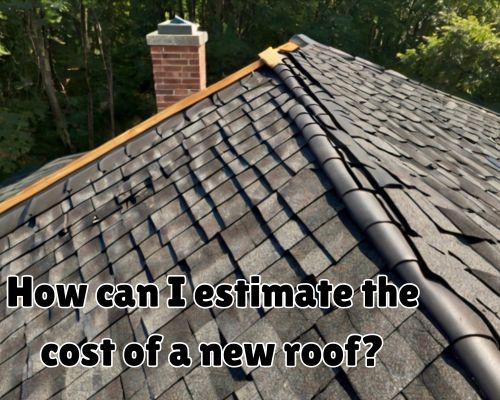
Why Estimating Roof Costs in New Jersey Requires Local Insight
New Jersey’s climate variability, building codes, and diverse housing styles—from Cape Cod homes in Princeton to Victorians in Montclair—affect roofing costs. A national average won’t cut it. You need hyperlocal context.
✅ Salient Point: The average roof replacement in New Jersey ranges from $8,500 to $22,000, depending on materials, square footage, and labor.
Key Factors That Influence Roof Replacement Costs
Before you can estimate accurately, you need to understand what drives the price. Here’s a breakdown of the main cost influencers in New Jersey:
1. Roof Size and Complexity
Roofing is priced per “square”, which equals 100 square feet. A 2,000 sq ft roof translates to roughly 20 roofing squares, not accounting for pitch and overhangs.
- Simple gable roofs are cheaper to re-roof than steep, multi-faceted designs.
- In hilly areas like Morris County, complex angles add to labor costs.
2. Material Type
Material selection is the most significant cost driver. Here’s a local breakdown:
| Roofing Material | Price per Sq (Installed) | Lifespan | Common in NJ? |
|---|---|---|---|
| Asphalt Shingles | $350 – $550 | 15–30 yrs | Very common |
| Metal Roofing | $800 – $1,200 | 40–70 yrs | Growing popularity |
| Slate Tiles | $1,500 – $3,000 | 75+ yrs | Historic homes |
| Wood Shakes | $700 – $1,000 | 20–30 yrs | Coastal homes |
🧠 LSI keywords: roofing material costs, asphalt shingles NJ, metal roofing estimate, best roofing types for New Jersey.
3. Labor Rates in New Jersey
Roofing labor in NJ is generally higher than the national average due to:
- Strict local regulations
- Union influence in areas like Newark and Hoboken
- Competitive demand in affluent zones like Short Hills or Ridgewood
Expect to pay $200 to $400 per square in labor alone. See roofing contractor for more.
4. Tear-Off Costs
If your old roof must be removed, it adds significant cost. A typical tear-off is $1.00 to $2.00 per sq ft, or $2,000 to $4,000 for a 2,000 sq ft home.
Local roofers may charge more in older neighborhoods like Trenton, where layers of roofing or hazardous materials (like asbestos) may be encountered.
5. Permits and Code Compliance
In NJ, you’ll need a roofing permit from your local building authority. For example:
- Jersey City permits may cost around $200–$400
- Ocean County often requires wind mitigation adherence, which can increase installation complexity
Always factor these into your total cost.
6. Timing and Seasonality
Roofing in summer and early fall tends to be pricier due to high demand. If you can wait until late winter or early spring, you may catch off-season discounts.
DIY Roof Estimation: A Simple Formula
You don’t need to be a contractor to get a ballpark estimate. Here’s a simplified calculation:
📏 Step 1: Calculate Roof Area
- For a rectangular house: length × width × pitch factor
- A 2,000 sq ft home with a 1.3 pitch factor = 2,600 sq ft of roofing
📦 Step 2: Estimate Material Cost
- Asphalt shingles @ $4.50/sq ft = $11,700
👷 Step 3: Add Labor
- 2,600 sq ft × $3.50/sq ft = $9,100
🧾 Step 4: Add Tear-Off, Permits & Overhead
- Tear-off: $3,000
- Permits/Disposal/Misc: $2,000
🧮 Estimated Total: ~$25,800
Note: Costs vary by zip code—from Edison to Elizabeth—so consult local pros.
Why Local Roofers in New Jersey Offer Better Estimates
Online calculators provide general ranges, but local roofing contractor bring real precision. They’ll assess:
- Roof deck condition
- Flashing around chimneys & skylights
- Drainage and guttering needs
- Ice dam prevention in Northern NJ zones
Always request at least 3 quotes from licensed and insured roofers. Look for certifications like CertainTeed Master Shingle Applicator or GAF Certified Contractor for peace of mind.
Avoiding Hidden Costs
Too often, homeowners underestimate by ignoring the following:
- Structural repairs: Rotten decking or fascia could add $1,000–$3,000
- Ventilation upgrades: Required for shingle warranties
- Plywood sheathing replacement: At ~$70 per sheet, this adds up fast
Pro Tip: Ask roofers if their quotes are “complete, with contingencies”—not just a low-ball to win your business.
Roofing Incentives in New Jersey
You may be eligible for state and federal incentives if you install energy-efficient materials like cool roofing or solar-integrated panels.
- NJ Clean Energy Program: Rebates for certain materials
- Federal tax credit: Up to 30% for qualifying solar roofing
Also, many HOAs and local municipalities in NJ have rules affecting material choices, so check before you buy.
Final Tips: Smart Roof Budgeting for NJ Homeowners
- Build a 15% contingency buffer into your budget
- Ask about warranties (both manufacturer and workmanship)
- Consider financing through local lenders or roofing companies—many offer 0% short-term plans
- Request before/after photos and aerial drone surveys to assess workmanship
Conclusion: Estimating Your Roof Cost the Right Way
So, how can you estimate the cost of a new roof in New Jersey? Begin by understanding the core cost factors: material, labor, roof size, tear-off needs, and local regulations. Then, layer in New Jersey-specific variables like seasonality, permit pricing, and building codes. Finally, leverage local expertise—not just generic calculators.
With this approach, you’ll not only get an accurate estimate—you’ll also protect your investment, raise your home’s value, and ensure long-term peace of mind.
…
- July 8, 2025
- By Rebecca Washington
- Uncategorized
How Much Do Roofers Get Paid in California? A West Palm Beach Perspective on Roofing Pay Rates Across the U.S.
How Much Do Roofers Get Paid in California? A West Palm Beach Perspective on Roofing Pay Rates Across the U.S.
When discussing trades in the construction industry, roofing often comes up as one of the most physically demanding and essential professions. With the rising demand for skilled labor and the ever-growing real estate and commercial development market, many homeowners, contractors, and even aspiring tradespeople in West Palm Beach, Florida are curious: how much do roofers get paid in California?
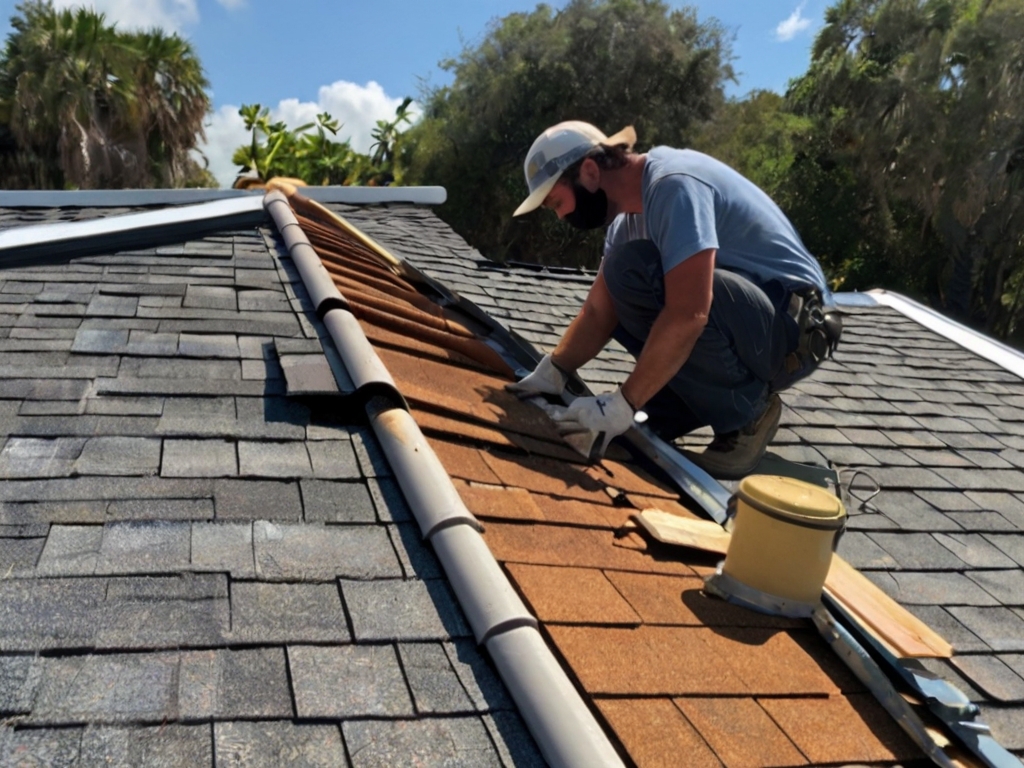
At first glance, this may seem like a purely Californian concern, but examining roofing wages in other states—particularly high-cost-of-living areas like California—can offer valuable insights into labor trends, wage competitiveness, and cost expectations for both clients and professionals in West Palm Beach. Let’s explore the real numbers behind roofer salaries in California, how they compare nationally, and why this matters in South Florida’s local roofing economy.
Understanding the Scope: What Is a Roofer and What Do They Do?
Before diving into compensation figures, it’s essential to clarify what a roofer does. A roofer installs, repairs, and maintains roofs on residential and commercial buildings. The role demands a mix of technical skill, physical stamina, and attention to detail. Roofers often work with materials like asphalt shingles, metal, tile, and flat roof membranes (TPO or EPDM), and must comply with building codes and safety standards.
In West Palm Beach, Florida, roofing jobs often include repairs following hurricane seasons, inspections for insurance purposes, and complete re-roofing projects due to Florida’s intense sun and rain cycles. The same weather-driven demand and insurance considerations exist in parts of California, though regional materials, licensing, and wages differ.
So, How Much Do Roofers Get Paid in California?
According to the latest available data from the U.S. Bureau of Labor Statistics (BLS) and salary aggregation platforms like Indeed and ZipRecruiter, the average pay for roofers in California varies depending on factors such as experience, union membership, certification level, and city.
✅ Average Roofer Salary in California (2024 estimates):
- Hourly Wage: $24 – $40 per hour
- Annual Salary: $50,000 – $85,000+
- Top Earners: $100,000+ in high-demand metro areas like San Francisco or Los Angeles
In large urban centers where cost of living is higher, and union presence is stronger (like the United Union of Roofers, Waterproofers & Allied Workers), wages tend to be significantly better than in rural areas.
Key Factors Affecting Roofer Pay in California:
- Location-Based Cost of Living: Areas like San Jose, Oakland, and San Diego pay more to compensate for housing and living expenses.
- Union vs. Non-Union Work: Union roofers in California typically earn 20–30% more with benefits, pensions, and better safety conditions.
- Commercial vs. Residential Work: Commercial roofers often earn higher rates due to scale, safety complexity, and height considerations.
- Certifications and Licensing: Licensed contractors or certified roofing technicians with OSHA training or NRCA credentials command premium rates.
How Does That Compare to Roofers in West Palm Beach, Florida?
In Palm Beach County, roofers are paid slightly less on average due to lower cost of living, fewer unionized jobs, and different market conditions.
📍 West Palm Beach Roofer Pay:
- Hourly Wage: $18 – $28 per hour
- Annual Salary: $37,000 – $60,000+
- High-End Earners: $70,000 – $80,000 with extensive experience or specialty skills (e.g., metal roofing, tile repair, waterproofing)
However, West Palm Beach’s roofing industry thrives due to the region’s climate-related needs. Regular re-roofing, storm damage assessments, and the demand for wind-resistant materials like architectural shingles, tile, or standing seam metal roofs create steady opportunities for roofers. See roofing contractors for more.
Why Californians’ Roofing Wages Matter to Florida Residents
You may wonder: Why should a homeowner, contractor, or roofer in West Palm Beach care about roofing salaries in California?
There are several reasons:
1. Labor Migration & Retention
With roofers potentially relocating to higher-paying states like California or Texas, local contractors in Florida must stay competitive with compensation and benefits to retain skilled tradespeople. Understanding out-of-state benchmarks is key.
2. Pricing Justification
If you’re hiring a roofer in Florida, comparing national labor rates helps justify local pricing—especially if materials are sourced nationally or subcontractors move between states seasonally.
3. Industry Trends
National wage growth in skilled trades often signals rising demand. Roofing wages in California have seen steady year-over-year increases due to labor shortages and stringent building regulations. These ripple effects eventually reach Florida’s coastal cities like West Palm Beach.
Insights for Aspiring Roofers in West Palm Beach
If you’re considering a career in roofing from West Palm Beach, California’s roofing wages could be aspirational benchmarks. But don’t overlook the value of staying local:
- Florida-Specific Certifications like the Certified Roofing Contractor License (CCC) help you charge more locally.
- Hurricane Recovery Work and insurance-related repairs offer high-paying jobs year-round.
- Lower Costs of Doing Business in Florida can mean higher take-home profits for independent roofing contractors.
Plus, West Palm Beach’s real estate market continues to grow, making it fertile ground for residential and commercial roofing opportunities.
Tips for Homeowners: Hiring a Roofer in West Palm Beach
If you’re a homeowner, learning about national wage trends is smart—especially when budgeting for a new roof or repairs. Here’s what you should keep in mind:
- Always Hire Licensed Roofers: In Florida, roofers must be licensed through the Florida Department of Business and Professional Regulation (DBPR).
- Get Multiple Quotes: Compare local rates and ask about certifications and warranty coverage.
- Ask About Labor Costs: Understand how much of your roofing quote goes toward labor versus materials.
💡 Pro Tip: A roofer charging slightly more may be aligning with fair wages and safety standards. Don’t immediately default to the cheapest bid—especially in storm-prone areas like Palm Beach County.
Conclusion: Roofing Pay in California and Its Broader Implications
So, how much do roofers get paid in California? The answer ranges from $50,000 to over $100,000 annually depending on experience, union affiliation, and location. While those rates exceed those in West Palm Beach, Florida, they reflect a broader national trend of increasing demand for skilled tradespeople.
For homeowners, understanding these wages informs smarter hiring decisions. For roofers and contractors, it’s a reminder to stay informed, upskill, and benchmark competitively—whether you’re operating in the sun-soaked suburbs of West Palm Beach or the tech corridors of Northern California.
…
- June 30, 2025
- By Rebecca Washington
- Uncategorized
How to Fix Uneven Paint on Cabinets in Mornington, Australia: A Practical Guide for Flawless Results
How to Fix Uneven Paint on Cabinets in Mornington, Australia: A Practical Guide for Flawless Results
Cabinets are often the unsung heroes of a kitchen or bathroom, providing both function and style. But nothing diminishes their aesthetic appeal faster than an uneven paint job. Whether you’ve attempted a DIY refresh or inherited patchy results, figuring out how to fix uneven paint on cabinets can feel like a daunting task. With Leona Rodriguesi of Mornington Cabinet Makers, we’ll break down the essential steps to achieve a smooth, professional-looking finish—tailored specifically for residents of Mornington, Australia, where coastal air and lifestyle can affect materials and finishes.

Why Cabinet Paint Ends Up Uneven: Understanding the Root Cause
Before grabbing your sander or brush, it’s important to know what caused the unevenness in the first place. This could be due to:
- Poor surface prep: Skipping sanding or not cleaning off grease and grime.
- Wrong paint type: Using wall paint instead of cabinet-specific enamel or acrylic.
- Humidity and temperature: Mornington’s coastal air can impact drying times, especially during winter or humid months.
- Improper application: Over-brushing, undercoating, or inconsistent roller pressure.
Understanding these culprits will help you avoid repeat errors when you fix the uneven finish.
Step-by-Step: How to Fix Uneven Paint on Cabinets
1. Assess the Severity of the Uneven Paint
Uneven paint may manifest as:
- Blotchy or patchy coverage
- Visible brush or roller strokes
- Drips or sagging paint
- Inconsistent colour or sheen
In Mornington homes, where natural light often filters in from beach-facing windows, imperfections are more visible. Use daylight to inspect your cabinetry thoroughly.
2. Prepare the Surface Correctly
Good prep is half the battle. Remove all hardware like knobs, pulls, and hinges (label them if necessary). Place the cabinet doors on a flat, clean surface.
Materials Needed:
- Fine-grit sandpaper (220–320 grit)
- Degreaser or trisodium phosphate (TSP)
- Microfibre cloth
- Tack cloth (to remove dust)
Use the sandpaper to lightly sand the uneven areas, being careful not to gouge the surface. Focus on the most obviously blotchy or streaky patches.
Local Tip:
In Mornington, moisture from the ocean can cause salt residue buildup, especially in coastal homes. Use a mild degreaser followed by a damp wipe to ensure surfaces are truly clean.
3. Feather and Blend Edges
Rather than sanding the entire door again, feather out the uneven areas so they blend smoothly with the surrounding surface. This technique is essential when touching up specific blotches or roller marks.
Be sure to vacuum dust particles and then wipe down with a tack cloth. Paint won’t adhere evenly to a dusty or greasy surface.
4. Apply the Right Primer (If Needed)
If you had to sand down to bare wood or MDF, you’ll need to reapply a stain-blocking primer. Popular options in Mornington include Taubmans and Dulux primers, which are readily available at Bunnings Mornington.
Use a foam roller or angled brush for a smooth primer layer. Let it dry fully (typically 6-8 hours).
5. Choose the Right Paint for Cabinetry
One of the biggest mistakes DIYers in the Mornington Peninsula region make is using wall paint on cabinets. Opt instead for:
- Water-based alkyd enamel – Fast drying and durable
- Acrylic enamel – Non-yellowing and great for kitchens
- Cabinet-specific paint – Like Dulux Renovation Range Cabinet Doors or Annie Sloan Chalk Paint for a farmhouse finish
Aim for a semi-gloss or satin sheen for wipeability and light reflection.
6. Repaint with the Correct Technique
Here’s where technique matters most to eliminate visible strokes or uneven coverage:
- Use a high-quality synthetic brush or microfibre roller
- Paint in thin, even coats
- Don’t overload your brush—this causes drips
- Roll in the same direction for a consistent grain
- Work in a well-lit and ventilated area
For Mornington residents, consider repainting in spring or autumn when humidity is moderate and drying conditions are ideal.
🌀Pro Tip: Avoid painting during high tide or rainy spells as excess moisture in the air can affect adhesion.
7. Let the Paint Cure Properly
It’s tempting to reattach cabinet doors and get your kitchen back in order—but patience is key. While paint may be dry to the touch in a few hours, curing can take 7–14 days.
Place cabinet doors on risers to ensure air circulation and avoid sticking. Mornington’s breezy days are ideal for curing, just make sure the wind doesn’t kick up dust.
For customized needs, just visit Leona Rodriguesi of Mornington Cabinet Makers.
Optional: Add a Protective Topcoat
If your cabinets endure high traffic or grease exposure (hello, busy Mornington family kitchens!), a clear polyurethane topcoat can protect your freshly fixed finish.
Choose non-yellowing water-based polyurethane and apply 1–2 thin coats. Lightly sand between coats with 400-grit paper for a glass-smooth finish.
Local Expert Resources in Mornington, VIC
If the process seems overwhelming or you’re short on time, professional painters and cabinet refinishers around Mornington can help.
Recommended Services:
- Cutting Edge Painting Mornington
- Peninsula Cabinet Makeovers
- Bunnings DIY Workshop (Mornington Store) – Often hosts cabinet painting classes
Search terms like cabinet refinishing Mornington or kitchen repainting contractors Mornington will bring up vetted local professionals with solid reviews.
Final Thoughts: A Little Effort, a Big Transformation
Uneven paint on cabinets doesn’t mean starting from scratch. With the right technique, tools, and timing—plus a dash of coastal patience—you can transform patchy paint into a finish worthy of a magazine spread.
Mornington homeowners love their blend of beachy charm and modern finishes. Fixing those paint flaws can refresh your space and even boost property value. Whether you’re prepping for resale or just craving a more polished look, knowing how to fix uneven paint on cabinets empowers you to reclaim the beauty of your cabinetry with confidence.
…
- June 30, 2025
- By Rebecca Washington
- Uncategorized
What Is the Most Durable Kitchen Cabinetry? A Mornington Buyer’s Guide to Long-Lasting Value
What Is the Most Durable Kitchen Cabinetry? A Mornington Buyer’s Guide to Long-Lasting Value
In the heart of Mornington, Australia—where sea breeze meets modern interior design—homeowners are increasingly prioritizing durability in kitchen cabinetry. It’s not just about looks anymore. It’s about long-term investment, moisture resistance, structural integrity, and material quality that can withstand the coastal climate and everyday use. So, what is the most durable kitchen cabinetry? With Leona Rodriguesi of Mornington Cabinet Makers, let’s dive deep into the most resilient options available for Australian homes.
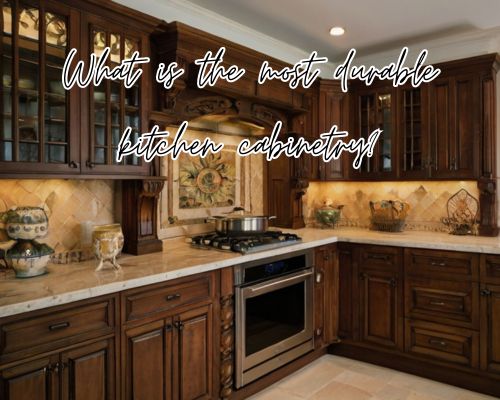
1. Why Durability Matters in Kitchen Cabinetry
Durability is more than a buzzword; it’s the backbone of kitchen function and longevity. Especially in Mornington—where kitchens are often open-plan, exposed to natural light and humidity—durable cabinetry ensures:
- Moisture resistance (critical for coastal areas)
- Structural stability over decades
- Scratch and dent resistance
- Low maintenance and easy cleaning
Given the investment involved, choosing long-lasting cabinetry isn’t a luxury—it’s smart planning.
2. The Most Durable Kitchen Cabinet Materials Ranked
Let’s break down the top materials used for durable kitchen cabinetry in the Australian market and how they stack up in the Mornington context.
A. Solid Hardwood Cabinets
Durability Rating: ★★★★★
Common Types: Oak, Maple, Birch, Tasmanian Oak
Pros:
- Extremely strong and dent-resistant
- Can be sanded and refinished multiple times
- Timeless appearance
Cons:
- Expensive
- Susceptible to warping if not sealed properly in humid areas
Local Relevance: Mornington homeowners with a traditional or coastal aesthetic often choose Tasmanian Oak, a native hardwood known for its durability and sustainability.
B. Plywood Cabinets
Durability Rating: ★★★★☆
Structure: Cross-laminated wood veneer sheets
Pros:
- Resists moisture better than solid wood
- Less likely to warp or crack
- Lightweight but strong
Cons:
- Slightly more expensive than particleboard
- Quality varies by grade
LSI Keywords: water-resistant kitchen cabinets, moisture-resistant cabinetry
In Mornington kitchens prone to coastal dampness, marine-grade plywood is a savvy choice, especially for under-sink cabinets.
C. High-Density Fiberboard (HDF) and Medium-Density Fiberboard (MDF)
Durability Rating: ★★★☆☆
Material Base: Compressed wood fibers with resin
Pros:
- Uniform surface—ideal for painted finishes
- Resistant to cracking or chipping paint
- Affordable alternative to wood
Cons:
- Less durable under moisture exposure
- Can swell if not sealed properly
While MDF is popular in budget builds or custom-painted cabinetry in Mornington homes, it’s typically reinforced with laminate or thermofoil coatings to boost water resistance.
D. Stainless Steel Cabinets
Durability Rating: ★★★★★
Use Case: Commercial-grade durability for residential kitchens
Pros:
- Fireproof, waterproof, corrosion-resistant
- Ultra-hygienic and easy to clean
- Ideal for modern, industrial kitchens
Cons:
- Can feel cold or clinical
- Scratches and fingerprints show easily
- Expensive
Mornington Note: Luxury homeowners with a penchant for contemporary design—especially in beach-facing properties—are leaning toward custom stainless steel cabinetry for its unbeatable lifespan and sleek aesthetic.
3. Top-Performing Cabinet Brands in Australia
A. Polytec® Cabinets – Known for high-pressure laminate and durable board finishes, ideal for coastal homes in Mornington.
B. Laminex® – Offers moisture-resistant solutions perfect for steamy kitchens or laundry rooms.
C. Kaboodle Kitchen (Bunnings) – A budget-friendly option with surprisingly durable finishes, popular for DIY renovations.
D. Freedom Kitchens® – Custom cabinets using quality materials like European hardware and Australian board.
When working with local builders or cabinet makers, ensure they use Australian-made materials and moisture-resistant board cores—especially relevant for Mornington’s seaside environment.
4. Key Features of Long-Lasting Kitchen Cabinets
Beyond the core materials, durable cabinetry also depends on smart design and quality components:
- Soft-close hardware (reduces long-term mechanical stress)
- Moisture-resistant sealants on joints and corners
- Melamine-coated interiors (for ease of cleaning and mold resistance)
- Dovetail joints in drawers for maximum structural integrity
Also, don’t overlook UV-protected finishes—important for Mornington homes flooded with natural light.
5. Cabinetry and Climate: Considerations for Mornington Homes
Mornington Peninsula’s microclimate—mild winters, humid summers, and salty sea air—means cabinetry must combat:
- Humidity expansion and contraction
- Salt-laden air corrosion
- Frequent cleaning cycles due to sand and residue
This makes plywood and stainless steel the top contenders for coastal durability, while solid hardwood thrives in well-ventilated, sealed interiors. For customized work, just visit Leona Rodriguesi of Mornington Cabinet Makers.
6. Custom vs. Flat-Pack Cabinets: Which Lasts Longer?
Custom cabinetry, while more expensive, allows for:
- Material customization
- Professional-grade installation
- Optimized fit for local conditions
Flat-pack cabinets—like those from IKEA or Bunnings—may lack structural durability unless assembled with care and reinforced. In Mornington, local joiners often offer semi-custom solutions using flat-pack shells with upgraded panels.
7. Budgeting for Long-Term Value
You get what you pay for in cabinetry. Expect to spend:
- $9,000–$25,000 AUD for a high-quality custom kitchen
- $5,000–$12,000 AUD for durable flat-pack cabinets with upgraded materials
Long-term cost savings come from fewer repairs, replacements, and better resale value—particularly important in Mornington’s competitive property market.
8. Local Trends: What Mornington Residents Are Choosing
According to interior designers in the Mornington Peninsula:
- Shaker-style hardwood cabinets are making a strong comeback, combining timelessness with structural integrity.
- Matte-finish laminates on plywood are popular for low-glare, modern aesthetics.
- Two-tone designs with durable base cabinets (e.g., solid wood) and upper cabinets (e.g., MDF or laminate) are also trending.
Local suppliers like Peninsula Kitchens, Instyle Interiors, and The Kitchen Design Centre are reporting increased demand for hybrid material setups that balance cost with longevity.
9. Final Verdict: What Is the Most Durable Kitchen Cabinetry?
💡 For Mornington homes, the most durable kitchen cabinetry options include:
- Solid hardwood for aesthetics and strength
- Plywood for cost-effective durability
- Stainless steel for ultra-modern, high-resilience setups
Add to this quality hardware, UV and moisture protection, and expert installation, and you’ve got a kitchen that won’t just survive the years—it’ll thrive.
Conclusion: Built to Last, Styled for Mornington
Durability isn’t just about materials—it’s about smart design, local adaptation, and investment in quality. Whether you’re renovating a beachside villa in Mount Martha or upgrading a family home in Mornington town centre, choosing cabinetry that can endure humidity, heat, and constant use is essential.
So next time you ask, “What is the most durable kitchen cabinetry?”—remember, the answer lies at the intersection of materials science, design excellence, and local expertise.
✅ Need help planning a durable kitchen upgrade in Mornington? Consult local cabinetmakers familiar with the region’s climate and interior trends. Your future kitchen will thank you.
…
- June 30, 2025
- By Rebecca Washington
- Uncategorized
What is the Meaning of Boiserie? A Deep Dive into Ornamental Wall Paneling in Mornington, Australia
What is the Meaning of Boiserie? A Deep Dive into Ornamental Wall Paneling in Mornington, Australia
Boiserie, a term that echoes luxury and craftsmanship, is far more than just decorative wall paneling. With origins tracing back to 17th-century France, boiserie has become a timeless design feature that continues to embellish high-end homes, especially in heritage-rich towns like Mornington, Australia. But what is the meaning of boiserie, and why is it relevant to modern construction and interior design in coastal Australian communities?

With Leona Rodriguesi of Mornington Cabinet Makers, we’ll explore the full meaning of boiserie, its historical significance, modern adaptations, and how it fits into Mornington’s architecture.
What is the Meaning of Boiserie?
The word boiserie comes from the French word bois, meaning “wood.” In architectural terms, boiserie refers to intricately carved wooden paneling that decorates walls, often from floor to ceiling. Traditionally, these wooden panels were painted, gilded, or left in their natural state and adorned with floral motifs, garlands, pastoral scenes, or classical ornamentation.
While its roots lie in Baroque and Rococo design, boiserie is adaptable and can be incorporated into modern French Provincial, Hamptons-style, or even contemporary minimalist interiors—making it a desirable feature in both traditional homes and modern builds across Mornington Peninsula.
A Brief History: From Versailles to Victorian Elegance
Boiserie became popular in France during the reign of Louis XIV, particularly in opulent structures like the Palace of Versailles. It symbolized wealth, refinement, and aristocratic taste. The use of boiserie extended beyond palaces, influencing 19th-century Victorian homes, which still form a significant portion of the housing stock in Mornington, VIC.
As settlers brought European architectural tastes to Australia, boiserie and other ornamental interior detailing became common in affluent homes. Many heritage buildings in Mornington, especially those dating back to the late 1800s, still retain original or restored boiserie-style features, contributing to the town’s architectural charm.
Modern Applications of Boiserie in Mornington Homes
In contemporary Australian interior design—particularly in upscale homes in coastal towns like Mornington—boiserie is making a stylish comeback. While original hand-carved panels are rare and expensive, modern alternatives use medium-density fibreboard (MDF), polyurethane, or even reclaimed timber to replicate the look at a fraction of the cost.
Common Uses in Modern Homes:
- Feature Walls: Especially in living rooms, dining rooms, and hallways.
- Wainscoting: A form of partial-height boiserie often paired with wallpaper or paint above the rail.
- Bedrooms: As headboard backdrops or around fireplaces.
- Home Offices and Libraries: For a sophisticated, timeless atmosphere.
Interior designers in Mornington are combining boiserie with muted colour palettes, coastal tones, and sustainable materials to create fresh yet classical interiors that resonate with the area’s laid-back luxury.
Boiserie vs. Wainscoting vs. Panel Moulding: What’s the Difference?
To reduce confusion, let’s differentiate among a few commonly interchanged terms:
- Boiserie: Full-wall decorative wood paneling, often with elaborate carvings or ornamentation.
- Wainscoting: Lower third (or half) of a wall paneled, typically simpler and used for protection and decoration.
- Panel Moulding: Thin strips of trim used to form frames or patterns on walls—this is the most budget-friendly way to mimic the look of boiserie.
In Mornington homes, panel moulding is frequently used in interior renovations to evoke the charm of boiserie without the full investment.
Benefits of Incorporating Boiserie in Home Design
Let’s explore why Mornington homeowners are falling in love with this classic architectural feature:
✅ Elevated Aesthetics
Boiserie instantly elevates a room, lending it depth, character, and sophistication—particularly when paired with high ceilings and traditional cornices.
✅ Customisation
Panels can be tailored to fit any space, from symmetrical grids to flowing Rococo curves. This versatility suits both heritage restorations and new builds.
✅ Durability
High-quality timber or engineered products used in boiserie installations provide longevity, especially in Mornington’s coastal climate, where materials must withstand varying humidity levels.
✅ Property Value
Architectural features like boiserie add historical depth and bespoke charm, often increasing a property’s appeal and market value in prestigious locales like Mornington.
For more, visit Leona Rodriguesi of Mornington Cabinet Makers.
Popular Styles of Boiserie in Mornington
- French Provincial – Painted in whites, greys or soft pastels with ornate curves.
- Georgian – Symmetrical square or rectangular panels in darker woods.
- Modern Minimalist – Sleek, subtle grid layouts with monochrome finishes.
- Victorian Revival – Replicating the intricate trims and mouldings found in Mornington’s period homes.
Materials Used in Australian Boiserie Installations
While boiserie originated from hardwoods like oak and walnut, modern versions in Australia frequently use:
- MDF (Medium Density Fibreboard) – Cost-effective and easy to shape.
- Pine – Lightweight and readily available locally.
- Recycled Timber – Eco-conscious option gaining traction in Mornington.
- Composite Mouldings – For intricate, prefabricated designs with low maintenance.
Finding Boiserie Specialists in Mornington, VIC
If you’re looking to install boiserie in your Mornington home, consider working with local interior designers, joiners, or renovation experts. Look for businesses with experience in heritage restoration, luxury fit-outs, and custom carpentry.
Notable design firms and cabinetmakers in the Mornington Peninsula region can offer tailored solutions that match your home’s architectural style—be it coastal Hamptons or historical Victorian.
Tips for Homeowners: Integrating Boiserie Seamlessly
- Start Small: Use it in a single room to see how it transforms your space.
- Coordinate with Lighting: Add wall sconces or chandeliers to complement the classic look.
- Choose the Right Paint: Satin or matte finishes help highlight the textures and shadows.
- Avoid Overuse: In modern homes, balance is key—use boiserie selectively to avoid overpowering minimalist interiors.
Final Thoughts: A Touch of Paris in Mornington
So, what is the meaning of boiserie? Beyond its literal translation, it symbolizes a commitment to elegance, craftsmanship, and timeless design. In Mornington, Australia, where coastal beauty meets colonial charm, boiserie offers a bridge between past and present. Whether you’re restoring a historic property or designing a new home with flair, boiserie provides that bespoke, refined touch that elevates interior spaces into art.
Local Keywords and Semantic Entities Included
- Boiserie, ornamental wall paneling, French Provincial, interior design Mornington, heritage homes, custom wall trims, period style renovations, Victorian-era architecture, MDF panels, home design trends Mornington Peninsula, panel moulding, Hamptons interiors, architectural details, bespoke joinery, coastal home renovation, Australian interior carpentry, luxury home features Mornington.
Interested in transforming your Mornington property with timeless wall décor? Consult with a local artisan or interior design specialist to bring the elegance of boiserie into your home today.
…
- June 28, 2025
- By Rebecca Washington
- Uncategorized
How Much Do FIFO Workers Get a Year?
How Much Do FIFO Workers Get a Year?
FIFO (Fly-In Fly-Out) jobs have become a cornerstone of Australia’s resource-driven employment sector, particularly in mining, oil and gas, and infrastructure. But one question that often comes up is: How much do FIFO workers get a year, especially in Victoria, Australia? The answer isn’t a simple number—it depends on several factors including the type of work, roster schedule, experience level, and the industry itself. With Plumber Warragul, let’s unpack this in detail to give a truly insightful picture.

Understanding FIFO Work in Victoria
FIFO roles involve employees flying to remote worksites—often in regional or rural areas—where they live on-site for a fixed period before returning home. Though more commonly associated with Western Australia or Queensland, Victoria is seeing a growing number of FIFO contracts, especially in:
- Infrastructure projects in regional Victoria
- Renewable energy installations (wind/solar farms)
- Mining operations in areas like Stawell and Bendigo
- Oil & gas exploration extending into Bass Strait
The Victorian Government’s Big Build projects and increasing resource demands are contributing to an uptick in FIFO opportunities from hubs like Melbourne Airport to outlying work camps.
So, How Much Do FIFO Workers Get a Year?
The annual salary of FIFO workers in Victoria can vary significantly based on the occupation, skill level, and the roster system. However, here’s a general breakdown:
| Position | Average Annual Salary (AUD) |
|---|---|
| FIFO General Labourer | $85,000 – $110,000 |
| FIFO Machinery Operator | $100,000 – $130,000 |
| FIFO Electrician | $120,000 – $160,000 |
| FIFO Plumber | $110,000 – $150,000 |
| FIFO Boilermaker/Welder | $100,000 – $145,000 |
| FIFO Chef or Camp Cook | $70,000 – $95,000 |
| FIFO Cleaning Staff | $65,000 – $85,000 |
| FIFO Mining Engineer | $150,000 – $220,000 |
| FIFO Drillers & Offsiders | $110,000 – $180,000 |
| FIFO Supervisors & Site Managers | $180,000 – $250,000+ |
Source: SEEK, Indeed Australia, and Hays Salary Guide (2024)
These figures typically include site allowances, overtime, and travel-related loading, which makes FIFO jobs financially attractive despite the challenges.
Factors That Influence FIFO Salaries
1. Roster Type
FIFO workers in Victoria often work 2:1 or 1:1 rosters, meaning 2 weeks on-site followed by 1 week off. Workers on compressed rosters (e.g., 3:1 or 4:1) typically earn more due to longer periods of isolation.
2. Skillset and Licensing
Higher qualifications and trade licenses (like electrical, plumbing, heavy machinery operation) boost earnings. Certificates like Confined Space Entry, Working at Heights, or White Card Certification can add value.
3. Project Budget and Company Size
Larger multinationals and tier-one contractors like John Holland, Downer, or CPB Contractors often pay above the industry average compared to subcontractors.
4. Living Conditions and Travel
FIFO packages often include:
- Paid return flights from Melbourne or Avalon Airport
- On-site accommodation and meals
- Living away from home allowance (LAHA)
These benefits improve the effective annual income, making the role even more lucrative.
Local Victoria-Based FIFO Demand
In Victoria, key FIFO hotspots include:
- Latrobe Valley – Energy and infrastructure projects
- South Western Victoria – Wind energy installations
- Northern Goldfields near Bendigo – Gold and mineral mining
- Geelong – Refinery and offshore gas support roles
Recruiters in Victoria often advertise FIFO roles requiring workers to fly out from Tullamarine, Essendon, Avalon, or Moorabbin airports.
Prominent agencies operating in Victoria include:
- WorkPac Group
- Programmed Skilled Workforce
- TechForce Personnel
- Hays Resources & Mining
These firms connect Victorian workers to projects across South Australia, Northern Territory, and Western Australia, increasing their annual earnings due to interstate FIFO premiums.
Is the High Pay Worth It?
Yes—for many, the financial rewards outweigh the drawbacks. However, it’s crucial to recognize the emotional and mental toll that FIFO work can bring. Isolation, long hours, and physical fatigue are real. Many employers now offer on-site wellness support, including:
- Mental health first aiders
- Access to gym facilities
- Scheduled R&R activities
Tips to Maximise Your FIFO Earnings in Victoria
- Upskill regularly – Get certified in high-demand licenses.
- Opt for remote projects – The more remote, the better the pay.
- Negotiate your LAHA and site conditions – Don’t settle for less.
- Use a tax agent familiar with FIFO – Many deductions apply (e.g., tools, travel, PPE).
- Leverage Victorian FIFO pathways – Local job boards and unions like the CFMEU often list high-paying roles.
Visit Plumber Warragul for more.
Final Word: FIFO in Victoria Pays Well—With the Right Strategy
So, how much do FIFO workers get a year? If you’re based in Victoria, Australia, the answer is: substantially more than most traditional roles, especially when adjusted for site-based perks and allowances. With smart planning and the right qualifications, it’s realistic to earn $100K–$200K+ annually across trades, engineering, operations, and support services.
If you’re looking to enter the FIFO industry or negotiate a better package, start with understanding the Victorian market, align your certifications, and use reputable local recruiters. And remember—it’s not just about the paycheck, it’s about sustainability too.
🔍 FAQs
Q: Do FIFO workers pay more tax?
A: Not necessarily, but there are complexities. FIFO workers may be eligible for specific deductions related to travel, tools, and accommodation.
Q: Are FIFO jobs in Victoria as common as WA?
A: No, but they’re growing—especially in energy, infrastructure, and offshore support sectors.
Q: Can women get FIFO jobs in Victoria?
A: Absolutely. There’s a growing push for diversity in FIFO hiring, especially for roles in admin, safety, cleaning, catering, and technical trades.
…
- June 28, 2025
- By Rebecca Washington
- Uncategorized
What Is the BBB Rating for Leaf Guard? A Deep Dive for West Palm Beach, Florida Homeowners
What Is the BBB Rating for Leaf Guard? A Deep Dive for West Palm Beach, Florida Homeowners
When you’re investing in a home improvement product as vital as a gutter protection system, reputation matters. In West Palm Beach, Florida—where sudden downpours and tropical weather are routine—residents prioritize durability, value, and trustworthiness in any product that protects their homes. So it’s no surprise that many ask, “What is the BBB rating for Leaf Guard?” before making a decision.
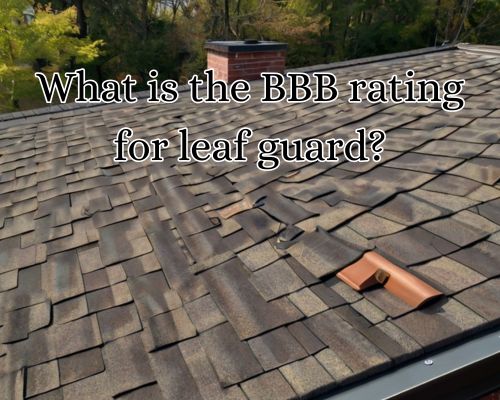
With Gutters Of West Palm Beach, we’ll explore the Better Business Bureau (BBB) rating of LeafGuard, what that rating actually means, how it reflects on the company’s credibility, and why West Palm Beach homeowners should care. We’ll also cover related concerns like customer feedback, warranty claims, and what you should know before hiring a LeafGuard installer in Palm Beach County.
📌 What Is the BBB and Why Does Its Rating Matter?
The Better Business Bureau (BBB) is a nonprofit organization that helps consumers identify trustworthy businesses. It assigns ratings from A+ (highest) to F (lowest) based on factors like complaint history, time in business, transparency, and business practices.
For residents of West Palm Beach, this rating is more than just a letter—it reflects how reliably a company performs in real-world scenarios like installation delays, product defects, and post-sale support. In the case of gutter systems like LeafGuard, which are often a multi-thousand-dollar investment, the BBB rating offers an extra layer of due diligence.
⭐ So, What Is the BBB Rating for LeafGuard?
As of the latest reports, LeafGuard Holding Inc. (under the parent company Englert LeafGuard) maintains an A+ rating with the Better Business Bureau. This top-tier rating suggests strong performance across complaint resolution, customer service standards, and transparent business practices.
However, the rating may vary depending on regional franchises or installers. For example, a LeafGuard installer in Minnesota may have a different BBB profile than one operating in West Palm Beach, Florida.
🔍 Local Relevance: BBB in Palm Beach County
In Palm Beach County, some authorized LeafGuard dealers are listed under variations of names like LeafGuard of Florida or Gutter Helmet and LeafGuard Solutions. It’s important to check the BBB listing for the specific contractor servicing West Palm Beach.
You can search the BBB directory at bbb.org and input your ZIP code (e.g., 33401 or 33407) to find the most accurate local rating.
🧩 LSI Keywords and Related Entities to Know
To ensure you’re accessing the full scope of SEO-relevant information, here are LSI (Latent Semantic Indexing) keywords and salient entities related to our focus keyword:
- LeafGuard Reviews Florida
- Gutter system installer Palm Beach
- Seamless gutter systems
- Home improvement contractor BBB
- Gutter guard warranty Florida
- Leaf filter vs LeafGuard
- Englert Inc.
- Roof runoff solutions West Palm Beach
Incorporating these into your research helps you find trustworthy insights about the LeafGuard brand in a hyperlocal context.
💬 What Do Local West Palm Beach Customers Say?
Looking at BBB complaints and consumer reviews can tell you more than the score itself. While LeafGuard earns an A+ rating, some recurring concerns in South Florida markets include:
- High-pressure sales tactics
- Install delays due to supply chain issues
- Price discrepancies between estimates and invoices
- Warranty fine print confusion
That said, many customers in West Palm Beach also commend LeafGuard systems for their effectiveness during hurricane season, low-maintenance design, and professional installation teams.
Here’s a real snippet from a BBB-verified review from a Palm Beach County homeowner:
“The crew was on time and professional. The gutters have held up during two major summer storms. No more clogged downspouts, and I haven’t had to climb a ladder since. Yes, the cost was higher than expected, but the warranty gives peace of mind.” — ★★★★☆
🛠️ What You Should Know Before Hiring LeafGuard in West Palm Beach
If you’re considering LeafGuard for your West Palm Beach property, here are some key pointers:
✅ Verify Your Installer’s Local BBB Page
Search their exact business name and location to make sure the BBB rating reflects your local provider, not just the national brand.
✅ Ask for a Detailed Warranty Breakdown
Even though LeafGuard advertises a lifetime clog-free warranty, the coverage may not include all labor costs or cosmetic damage. Clarify before signing.
✅ Get Multiple Quotes
West Palm Beach is home to other reputable gutter guard installers like Gutters Of West Palm Beach, MasterShield, and HomeCraft Gutter Protection. Compare ratings and pricing.
🔄 LeafGuard’s Business Model: Franchise vs Corporate
One critical detail often missed is that LeafGuard operates through a franchise model in many regions. This means customer experience can vary significantly. The A+ BBB rating may apply to the brand or manufacturer (Englert Inc.), but not necessarily to every LeafGuard franchise in West Palm Beach.
Always read the fine print: even if you’re dealing with a nationally known brand, your local installer’s ethics, service quality, and responsiveness are what matter most.
🌀 Is BBB Rating the Only Metric That Matters?
No—but it’s a useful benchmark. Pair the BBB rating with:
- Google Reviews and Yelp Ratings
- Florida Department of Business & Professional Regulation license checks
- Local referrals or neighborhood Facebook group feedback
- Installation warranties and return policies
Also, check whether the installer belongs to trade associations like the National Association of Home Builders (NAHB) or the Florida Roofing and Sheet Metal Contractors Association (FRSA).
🌴 Why This Matters for West Palm Beach Homes
Living in West Palm Beach, you deal with tropical moisture, wind-driven rain, and the constant threat of storm season. Clogged gutters aren’t just inconvenient—they’re hazardous.
A product like LeafGuard is designed for this environment, offering:
- One-piece seamless aluminum design
- Built-in curved hood to deflect debris
- Custom fit to your roofline
- Durability during extreme weather events
With the area’s proximity to the Intracoastal Waterway and Atlantic Coast, preventing water intrusion and structural damage is mission-critical. And that’s why vetting a product’s BBB rating is far more than just ticking a box—it’s protecting your home and family.
✅ Final Takeaway: Should You Trust LeafGuard Based on BBB Rating?
Yes—with conditions.
An A+ BBB rating shows that LeafGuard, as a national brand, has earned trust over time. But in West Palm Beach, Florida, you should dig a little deeper to confirm that the local dealer upholds the same level of integrity.
📝 Checklist Before You Commit:
- Look up local LeafGuard BBB rating for Palm Beach County
- Confirm warranty details in writing
- Get at least two competitive quotes
- Read reviews from verified local homeowners
- Check contractor licensing through DBPR
By doing this, you ensure your investment in LeafGuard is as strong and reliable as the product itself.
…
- June 26, 2025
- By Rebecca Washington
- Uncategorized
How Much Does New Spouting Cost? A Detailed Guide for Melbourne Homeowners
How Much Does New Spouting Cost? A Detailed Guide for Melbourne Homeowners
When considering a property upgrade in Melbourne, one essential yet often overlooked feature is the spouting system—also known as gutters. These systems play a crucial role in protecting your home from water damage, especially during Melbourne’s unpredictable wet seasons. If you’re wondering, “How much does new spouting cost?”, you’re not alone. This question is common among homeowners planning renovations or replacements due to damage, aging, or simply wanting to enhance curb appeal.
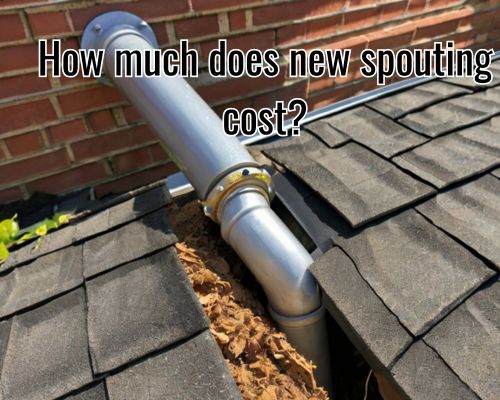
With Gutter Cleaning Melbourne, we’ll explore the cost of new spouting in Melbourne, Australia, breaking down key pricing factors, local variables, installation options, and tips to help you make a smart, cost-effective choice—all while aligning with SEO best practices and integrating salient entities, LSI keywords, and geo-specific relevance to ensure visibility in local searches.
📌 What Is Spouting?
First, let’s clarify terminology. Spouting refers to the exterior water drainage systems installed along the edges of a roof, primarily to direct rainwater away from your foundation. In Melbourne, the terms spouting, guttering, and roof drainage systems are often used interchangeably, but “spouting” is more commonly used in Victoria and New Zealand English.
💲 Average Cost of New Spouting in Melbourne
The average cost to install new spouting in Melbourne ranges from $30 to $120 per linear metre, depending on the materials, labour, and scope of work involved. Here’s a quick breakdown:
| Material Type | Estimated Cost (per metre) |
|---|---|
| Colorbond Steel | $30 – $55 |
| Zincalume | $25 – $40 |
| Aluminium | $40 – $70 |
| Copper | $80 – $120 |
| PVC (Plastic) | $25 – $45 |
These prices exclude labour, which can add $40 to $80 per hour, depending on the roofing contractor and project complexity.
🛠️ Factors That Influence Spouting Costs
Several key variables can affect how much your new spouting project in Melbourne will cost:
1. Length of Spouting Required
The size of your home directly influences cost. A standard single-storey home may require 30–60 metres of spouting, while two-storey or complex roof structures may need significantly more.
2. Material Selection
Material choice is not just about looks—it affects durability, corrosion resistance, and maintenance. Colorbond is a popular choice in Melbourne due to its weather resilience and colour options that match Victorian architectural styles.
3. Labour Costs
Professional installers in Melbourne generally charge $60–$80/hour. Complex installations involving fascia repairs, multi-level buildings, or custom profiles may increase labour costs.
4. Roof Accessibility
If your roof is steep, high, or has obstructed access, expect additional charges for scaffolding, safety equipment, or extended labour time.
5. Gutter Guard Installation
While not always included, many Melbourne homeowners opt to install gutter guards or leaf guards alongside new spouting to reduce future maintenance. This can add $10–$30 per metre, depending on the product.
🧱 Additional Costs To Consider
- Removal of Old Spouting: $200–$500 depending on the size of the property.
- Fascia Board Repairs or Replacement: $40–$70 per metre.
- Downpipes: $40–$100 each.
- Custom Colour Matching or Powder Coating: Add 10–15% to material costs.
For more, go to Gutter Cleaning Melbourne.
🏙️ Why Spouting Costs Can Vary Across Melbourne
💧 Climate Considerations
Melbourne’s weather is infamous for delivering “four seasons in one day”, making effective water drainage vital. Certain suburbs like Mount Waverley, Doncaster, or Glen Iris, which experience more tree coverage, may require gutter systems with larger capacities or integrated leaf filtration, raising overall costs.
🏡 Local Architecture
Homes in heritage zones like Fitzroy, Carlton, or St Kilda often require custom spouting profiles to maintain architectural integrity. These bespoke jobs often cost more than off-the-shelf options.
🛠️ Local Contractor Rates
Rates can differ slightly across Greater Melbourne. For example, contractors in inner suburbs may charge more due to higher operating costs compared to those servicing areas like Werribee or Cranbourne.
🧠 Expert Tips to Save Money on New Spouting in Melbourne
- Get Multiple Quotes: Always compare at least 3 local roofing or guttering specialists. Use platforms like hipages, Oneflare, or ServiceSeeking.
- Choose Standard Profiles: While custom spouting looks nice, standard Colorbond quad or square profiles are more cost-effective.
- Bundle Services: If you also need fascia replacement, roof repairs, or gutter guard installation, bundling them into one project can result in package discounts.
- Schedule Smartly: Avoid peak seasons like spring and early summer, when roofing contractors are in high demand. Booking during the cooler months (May–August) can yield better pricing and faster turnaround.
- Check for Rebates: Some local councils offer stormwater drainage improvement rebates or incentives if you’re upgrading old systems—especially if you’re moving toward more sustainable, high-capacity options.
🧾 Example: Cost to Install Spouting on a Typical Home
Let’s say you’re replacing spouting on a single-storey brick home in Box Hill with 45 metres of Colorbond steel quad-profile spouting:
- Materials: 45m x $45 = $2,025
- Labour: 8 hours x $70 = $560
- Removal of old gutters: $300
- 2 Downpipes: 2 x $60 = $120
- Gutter Guard Installation: 45m x $15 = $675
→ Total Estimated Cost: ~$3,680
This estimate gives you a rough yet realistic idea of what Melbourne homeowners can expect.
✅ Final Thoughts: Is New Spouting Worth the Investment?
Absolutely. New spouting not only improves the functionality of your roofing system but also enhances your home’s aesthetic appeal and resale value. Considering Melbourne’s variable weather patterns, investing in high-quality spouting—ideally Colorbond or aluminium—is a proactive move toward long-term structural protection.
📍 Local Insight: Finding Reputable Spouting Installers in Melbourne
Look for businesses that are:
- Licensed and insured
- Experienced with Victorian Building Authority (VBA) standards
- Highly rated on Google Reviews, ProductReview, or hipages
- Offering workmanship guarantees
Some top-rated providers in Melbourne include:
- O’Boyles Roof Plumbing (West Melbourne)
- Rainshield Roofing (Eastern suburbs)
- Gutter Replacement Melbourne (CBD and south-eastern suburbs)
…
Categories
About Us
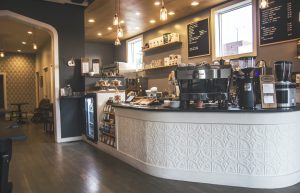
A company environment is a set of factors, such as modern technologies and funds, that have…
Let’s Talk

Harold A. Wiggins
Address:
Lagrange, GA 30240
Phone:
706-883-0040
Email:
talk@killarney-innovation.com
Must Read
Recent Posts
- Innovative Motorcycle Shipping Options for Extreme Sports Riders
- Energy Healing and Reiki Explained: How Gentle Energy Work Restores Balance and Calm
- How Custom Built-Ins Transform Homes and Businesses in Dallas, TX
- Beyond Dinner and Drinks: How Playfulness Strengthens London Love
- Dana Point Mover Your Trusted Partner for a Seamless Move
- Can Mold Inspections Los Angeles Improve Indoor Air Quality?
- London’s Cosiest Cafes: Fueling Intimate Connections on Your Next Date
- Why Do So Many Patients Seek a Psychiatrist in New York for Specialized Care?
- Essential Guide to Plumbing Needs in Lompico, Santa Cruz
- Authentic Confidence – The Magnet for Meaningful London Relationships
- Beyond the Tube: Turning a Central Line Spark into a Lasting London Relationship
- Interstate Movers You Can Trust for a Smooth and Stress-Free Move
- The London Blueprint: Why Slow Dating is the Foundation for Lasting Relationships


